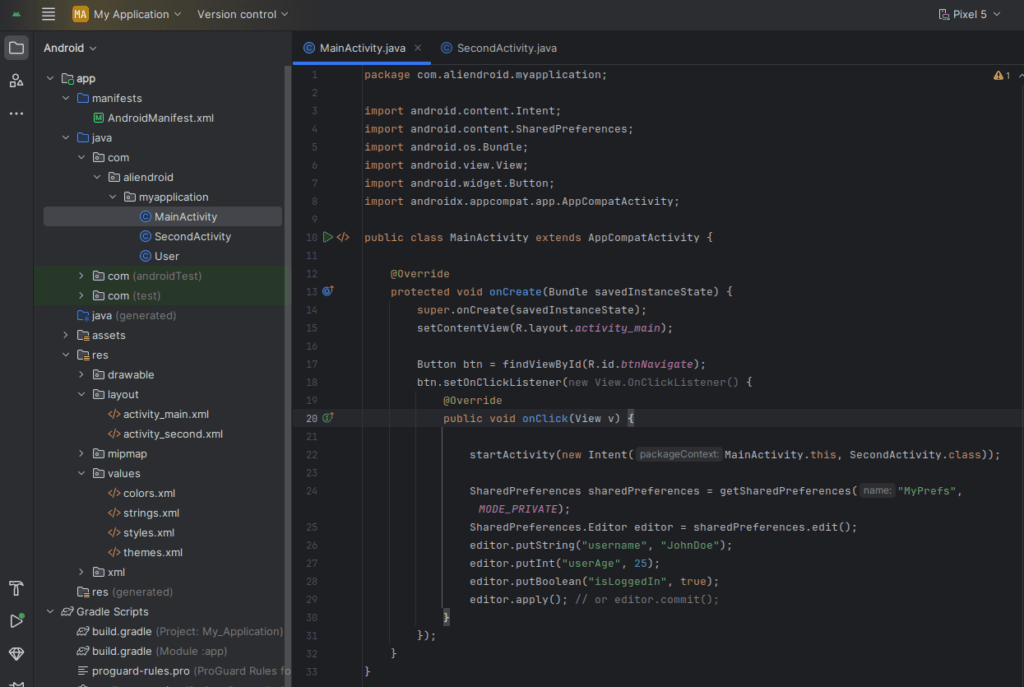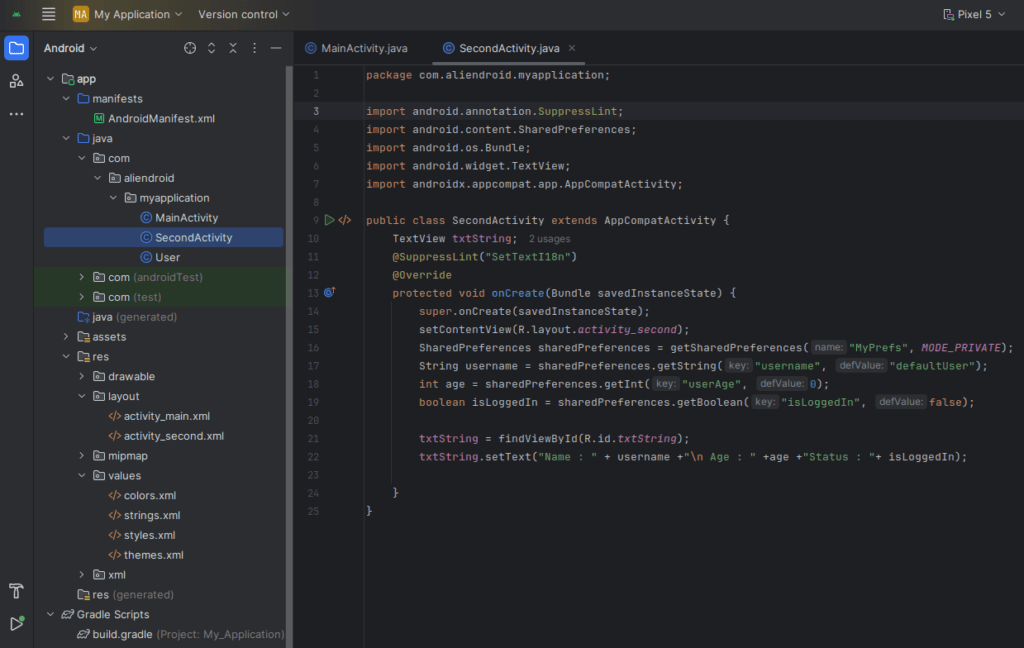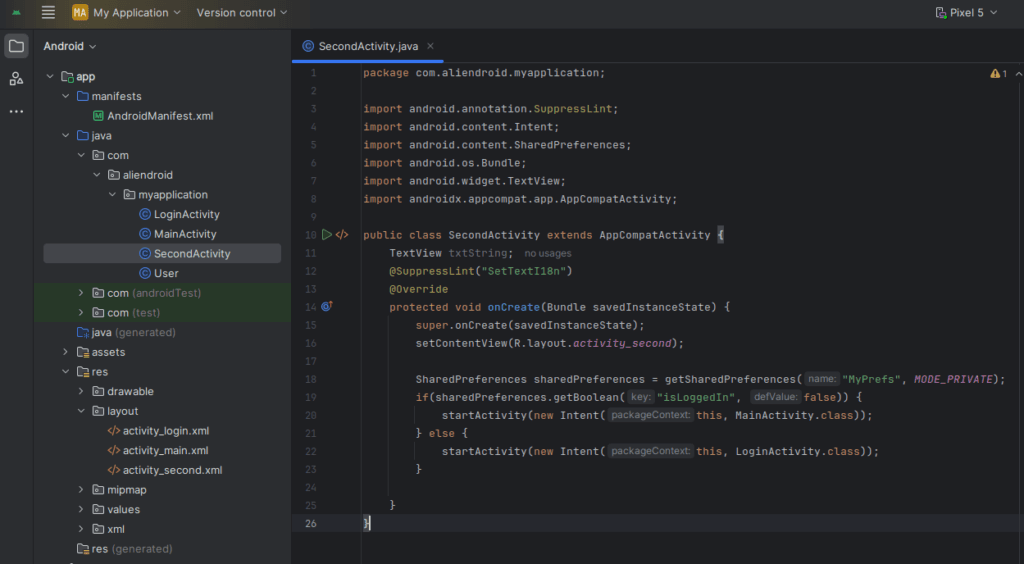1. What is SharedPreferences?
SharedPreferences is a key-value pair storage method in Android. It is best used for saving small pieces of data like user settings, login states, or preferences.
2. Create or Access SharedPreferences
SharedPreferences sharedPreferences = getSharedPreferences("MyPrefs", MODE_PRIVATE);"MyPrefs"is the name of the preference file.MODE_PRIVATEmeans the file is accessible only by your app.
3. Save Data to SharedPreferences

SharedPreferences.Editor editor = sharedPreferences.edit();
editor.putString("username", "JohnDoe");
editor.putInt("userAge", 25);
editor.putBoolean("isLoggedIn", true);
editor.apply(); // or editor.commit();apply()saves changes asynchronously.commit()saves changes synchronously and returns a success boolean.
4. Retrieve Data from SharedPreferences

String username = sharedPreferences.getString("username", "defaultUser");
int age = sharedPreferences.getInt("userAge", 0);
boolean isLoggedIn = sharedPreferences.getBoolean("isLoggedIn", false);Use default values in case the key doesn’t exist.
5. Remove or Clear SharedPreferences Data
// Remove specific data
editor.remove("username");
editor.apply();
// Clear all data
editor.clear();
editor.apply();Use Case Example: Login State Check

if(sharedPreferences.getBoolean("isLoggedIn", false)) {
// Navigate to MainActivity
} else {
// Navigate to LoginActivity
}Best Practices
- Use meaningful key names.
- Don’t use SharedPreferences to store large or complex objects.
- Use
apply()unless you need confirmation that the data was saved.